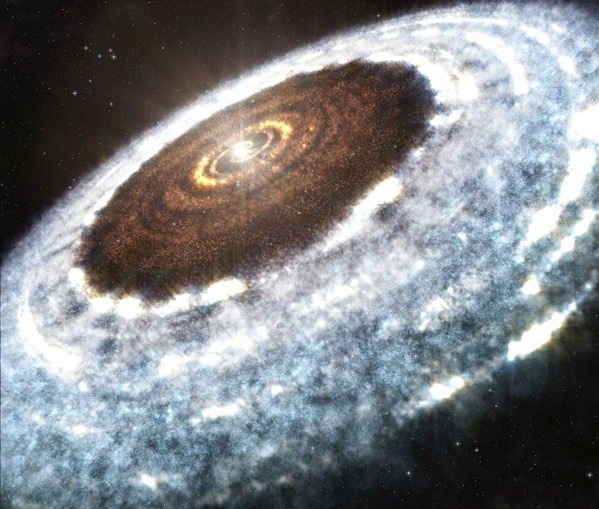In Cosmic First, Scientists Spy a Star's Snow Line
For the first time, astronomers have caught a glimpse of the water snow line around a star — the point in the young star's orbiting disk of debris where snow and ice first appear.
Normally, that boundary huddles too close to the star for astronomers to see it, but this particular star had a sudden burst of brightness that superheated its disk, obliterating ice further out than usual.
Researchers are excited to spot their first stellar snow line because of the vital part it plays in the formation of planets around young stars: The rocky section forms planets like Earth and Mars, while the snowy outskirts sprout gaseous worlds like Jupiter and Saturn.
A newborn star is surrounded by an orbiting pancake of gas, dust and debris — the raw materials from which its complement of alien planets will eventually form. Most stars are hot enough to evaporate the water in that disk up to about 280 million miles (450 million kilometres) from the center, which is three times the distance from Earth to the sun, allowing ice to coat the debris beyond. (The water skips its liquid phase because of the extremely low pressure in space.)
The star V883 Orionis, found 1,350 light-years from Earth in the constellation Orion, burns quite a bit hotter than usual — it is in the midst of a burst of brightness and heat from a sudden influx of new material. That let the star vaporize ice all the way out to 3.7 billion miles (6 billion km), or the average distance at which Pluto orbits the sun, catching researchers by surprise.

No comments:
Post a Comment